Abstract
The interaction of Treponema pallidum (Nichols strain) with cultured cells was investigated under aerobic conditions. Cell monolayers derived from rabbit testicular tissue extended the survival of treponemes as indicated by active motility. Large numbers of organisms rapidly attached to cultured cells. Within 3 h, one to twelve actively motile treponemes were attached to 25 to 50% of the cells. In addition, T. pallidum attained intracellularity as early as 30 min after inoculation of the cell monolayers. In sharp contrast, T. phagedenis biotype Reiter and T. denticola did not attach and did not enter cultured cells. Most importantly, intracellular and/or attached T. pallidum retained virulence for at least 24 h. Similar observations of attachment and retention of virulence were detected with ME-180, a cell line derived from a human cervical carcinoma. Preliminary studies with superoxide dismutase indicated that this enzyme prolonged treponemal motility and retention of virulence in the presence of cultured cells. These data provide guidelines for further investigations of in vitro cultivation of T. pallidum.
Full text
PDF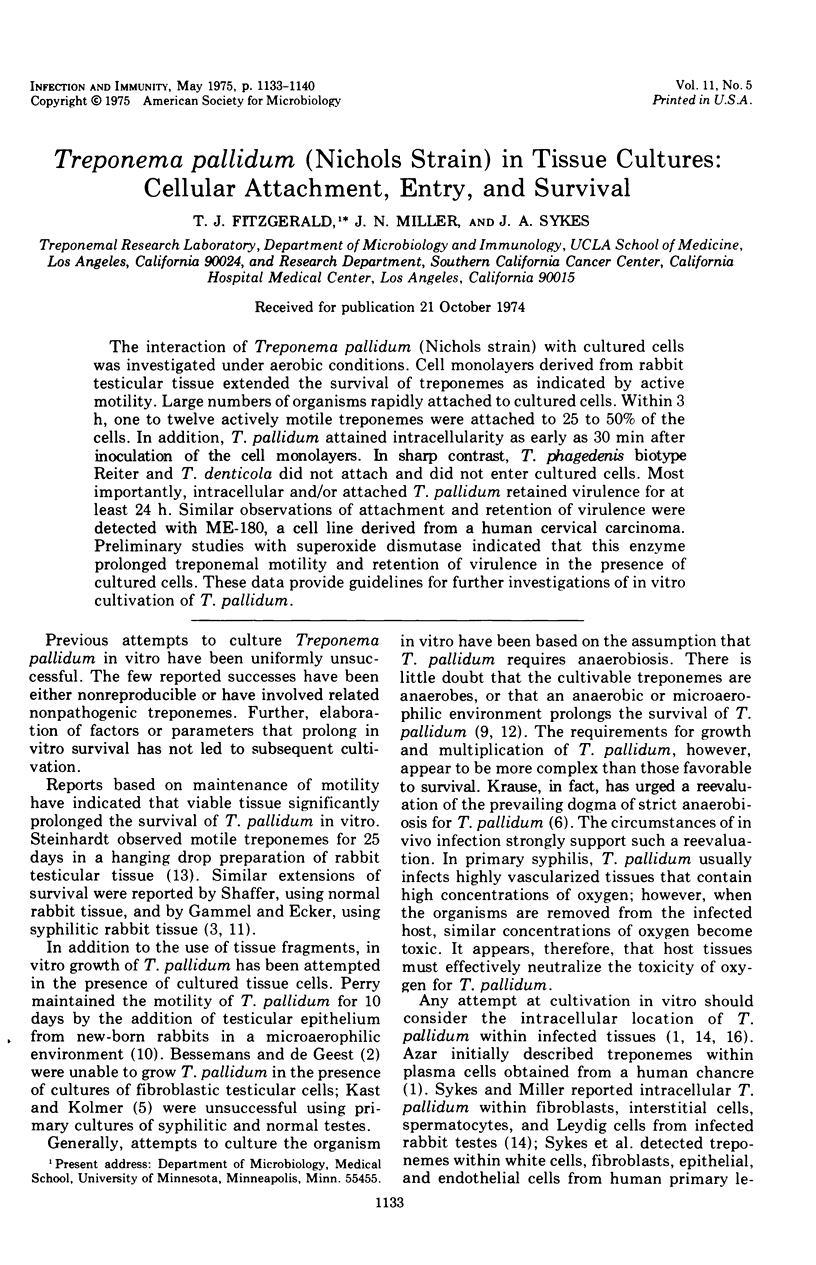
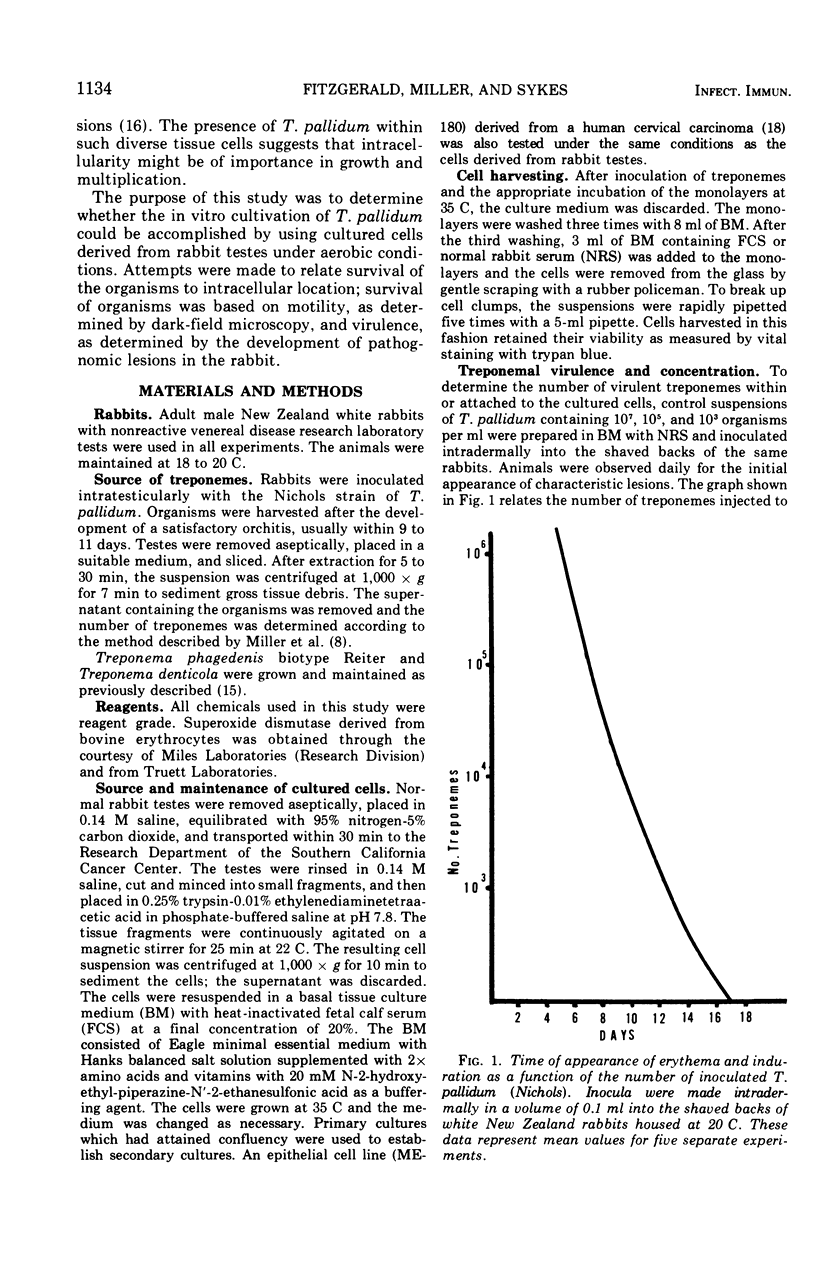

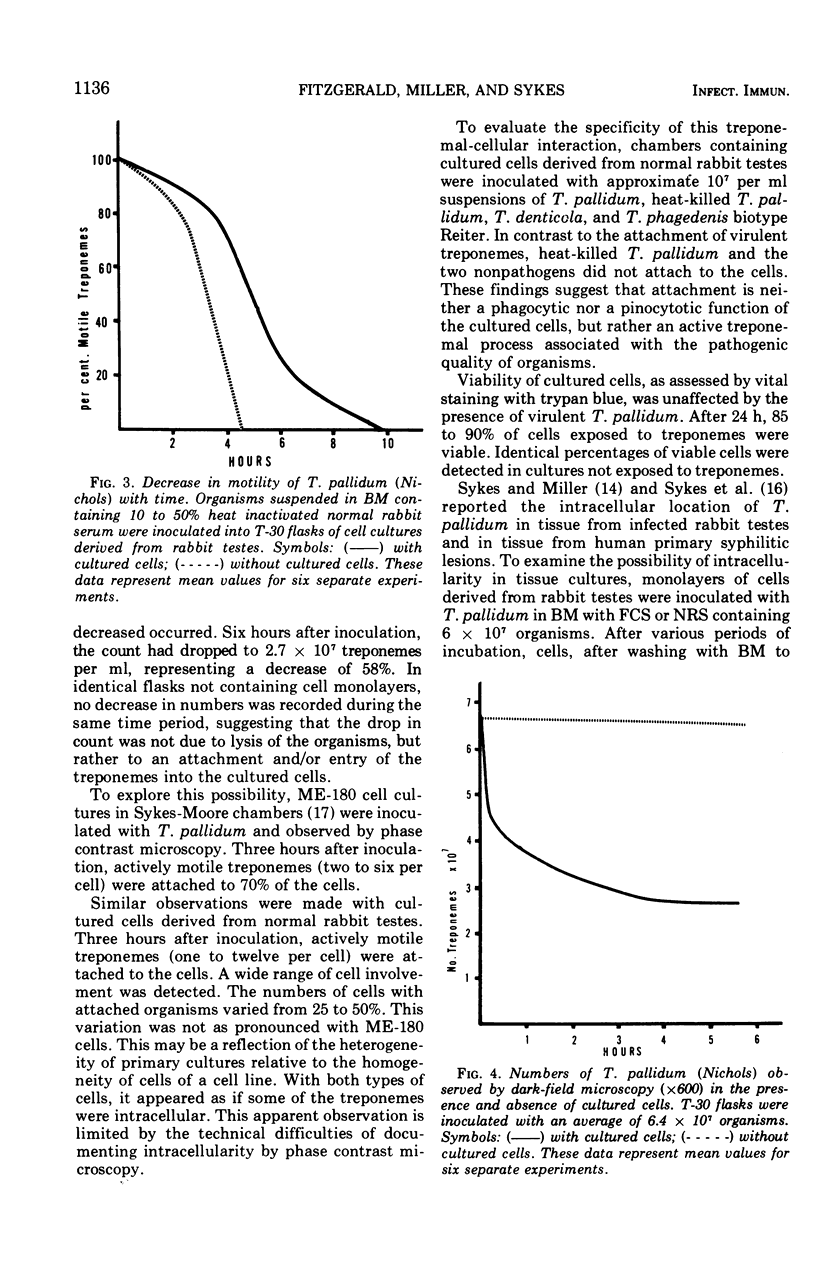

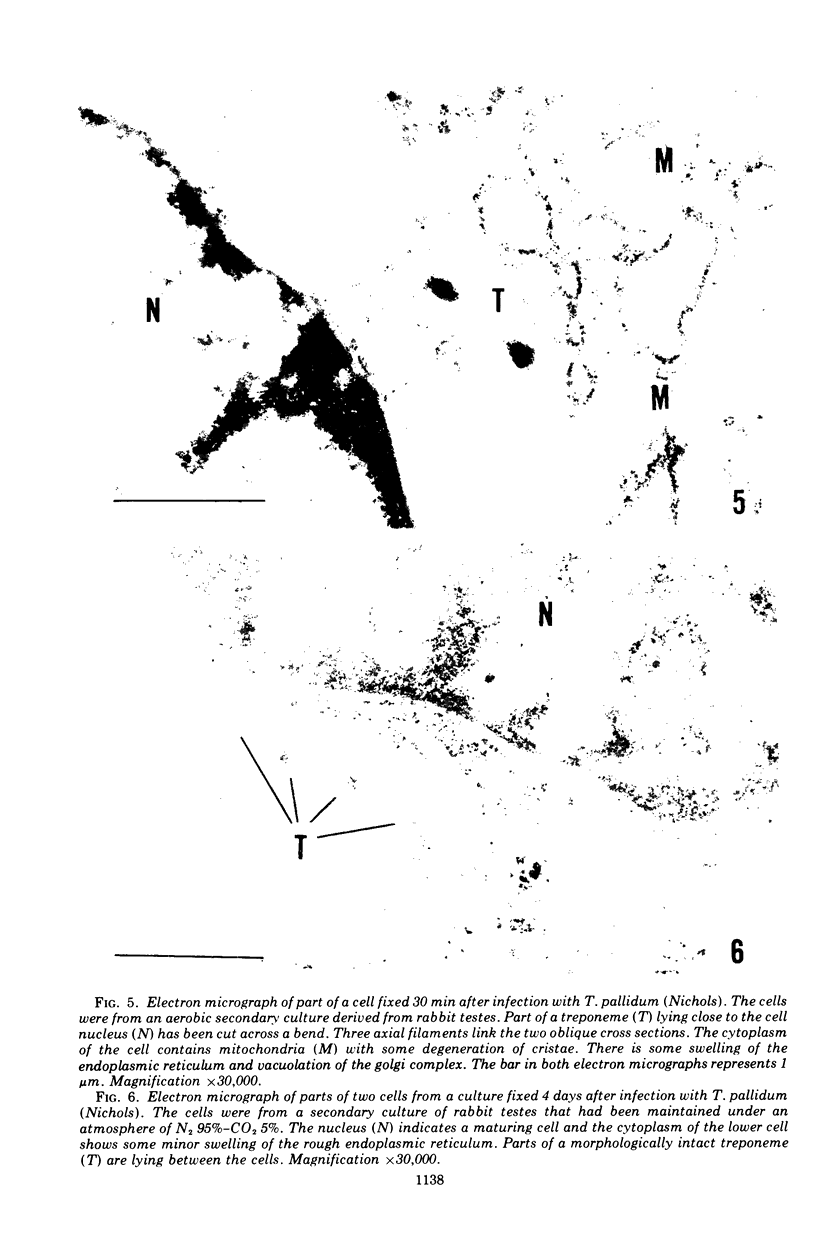
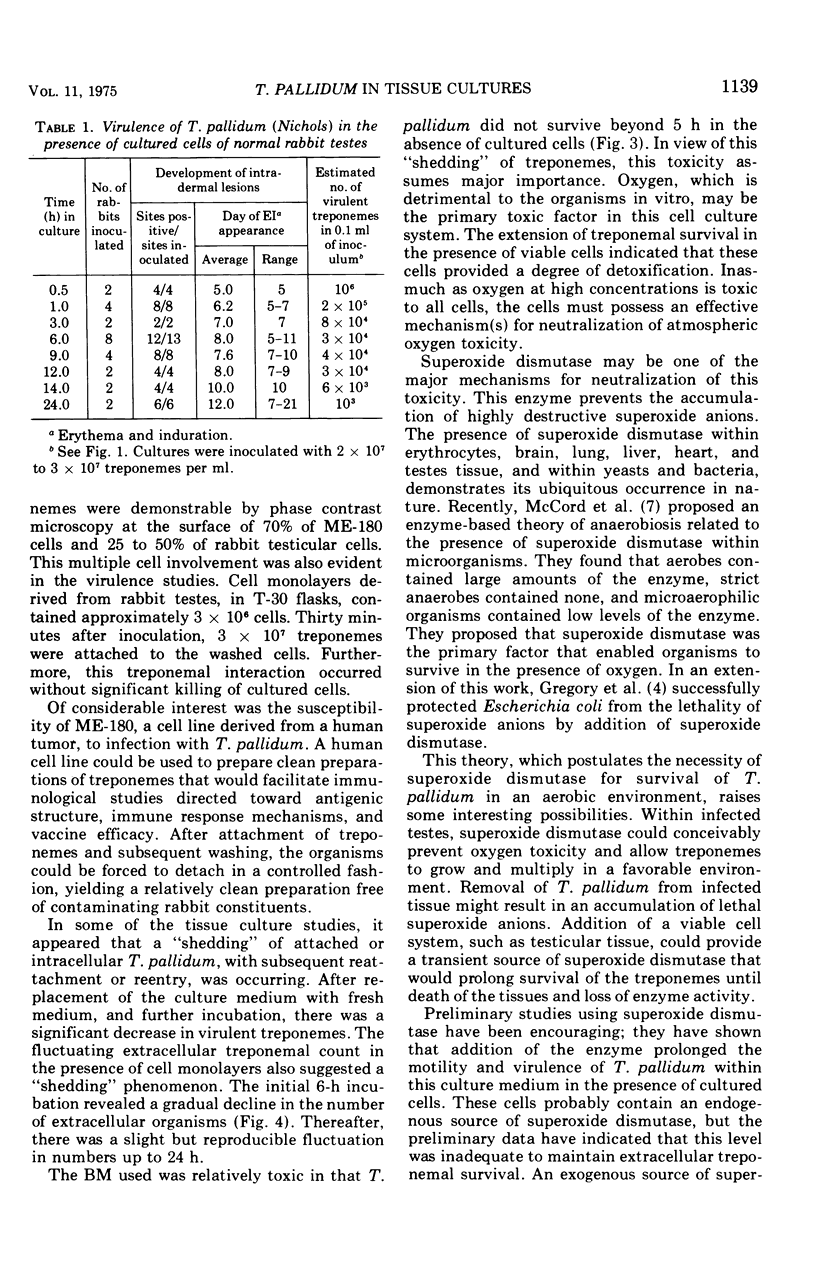

Images in this article
Selected References
These references are in PubMed. This may not be the complete list of references from this article.
- Azar H. A., Pham T. D., Kurban A. K. An electron microscopic study of a syphilitic chancre. Engulfment of Treponema pallidum by plasma cells. Arch Pathol. 1970 Aug;90(2):143–150. [PubMed] [Google Scholar]
- Gregory E. M., Yost F. J., Jr, Fridovich I. Superoxide dismutases of Escherichia coli: intracellular localization and functions. J Bacteriol. 1973 Sep;115(3):987–991. doi: 10.1128/jb.115.3.987-991.1973. [DOI] [PMC free article] [PubMed] [Google Scholar]
- Krause R. M. Workshop on the biology of the treponemes. J Infect Dis. 1972 Mar;125(3):332–332. doi: 10.1093/infdis/125.3.332. [DOI] [PubMed] [Google Scholar]
- MILLER J. N., WHANG S. J., FAZZAN F. P. STUDIES ON IMMUNITY IN EXPERIMENTAL SYPHILIS. I. IMMUNOLOGIC RESPONSE OF RABBITS IMMUNIZED WITH REITER PROTEIN ANTIGEN AND CHALLENGED WITH VIRULENT TREPONEMA PALLIDUM. Br J Vener Dis. 1963 Sep;39:195–198. doi: 10.1136/sti.39.3.195. [DOI] [PMC free article] [PubMed] [Google Scholar]
- McCord J. M., Keele B. B., Jr, Fridovich I. An enzyme-based theory of obligate anaerobiosis: the physiological function of superoxide dismutase. Proc Natl Acad Sci U S A. 1971 May;68(5):1024–1027. doi: 10.1073/pnas.68.5.1024. [DOI] [PMC free article] [PubMed] [Google Scholar]
- SYKES J. A., MOORE E. B. A simple tissue culture chamber. Tex Rep Biol Med. 1960;18:288–297. [PubMed] [Google Scholar]
- Sykes J. A., Miller J. N. Intracellular location of Treponema pallidum (Nichols strain) in the rabbit testis. Infect Immun. 1971 Sep;4(3):307–314. doi: 10.1128/iai.4.3.307-314.1971. [DOI] [PMC free article] [PubMed] [Google Scholar]
- Sykes J. A., Miller J. N., Kalan A. J. Treponema pallidum within cells of a primary chancre from a human female. Br J Vener Dis. 1974 Feb;50(1):40–44. doi: 10.1136/sti.50.1.40. [DOI] [PMC free article] [PubMed] [Google Scholar]
- Sykes J. A., Miller J. N. Ultrastructural studies of treponemes: location of axial filaments and some dimensions of Treponema pallidum (Nichols strain), Treponema denticola, and Treponema reiteri. Infect Immun. 1973 Jan;7(1):100–110. doi: 10.1128/iai.7.1.100-110.1973. [DOI] [PMC free article] [PubMed] [Google Scholar]
- Sykes J. A., Whitescarver J., Jernstrom P., Nolan J. F., Byatt P. Some properties of a new epithelial cell line of human origin. J Natl Cancer Inst. 1970 Jul;45(1):107–122. [PubMed] [Google Scholar]




